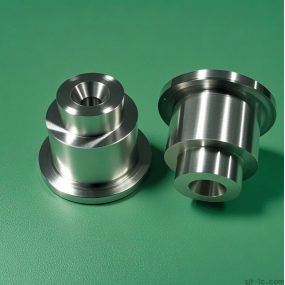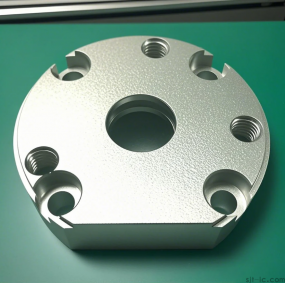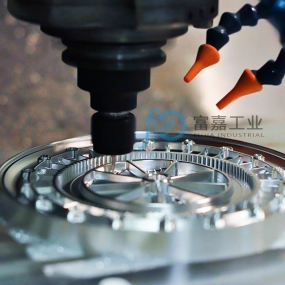Stamping and stretching oil is a medium viscosity metal processing oil designed for the stretching and stamping of various metals. Contains various extreme pressure, smooth, and rust resistant additives, suitable for automatic processing of low to medium strength steel, as well as non-ferrous metals such as copper and aluminum. The primary effect of stamping stretching oil in the stretching and forming of precision hardware parts is to achieve smoothness between the mold and the precision hardware parts, which belongs to the metalworking fluid. In addition, stretching oil also has cooling, anti-wear, cleaning, and rust prevention effects. The following mainly introduces the functional requirements of stamping and stretching oil in various stages:
1. Stamping process
With the continuous improvement of consumers‘ demands for car safety, lightweight development trends, and exterior appearance, the shape and scale of precision hardware components in car bodies are becoming increasingly chaotic. High strength steel plates that are difficult to form are widely used in car bodies, resulting in frequent cracking or wrinkling during stamping and stretching.
Smoothness, as the primary function of stretching oil, can effectively ensure the smooth progress of stamping and stretching processes, prevent surface cracking and wrinkling, ensure outstanding formability and demolding of steel plates, and prevent scratches and sintering between the mold surface and the steel plate. The improvement of smoothness can improve the functionality of molds, thereby reducing the requirements for metal material grades, allowing the use of lower grade metal materials, and significantly reducing scrap rates, which can save 10% to 20% of metal costs.
To better protect the mold, extend its lifespan, increase stamping speed, and reduce downtime for wiping the mold, stamping stretching oil should also have a certain cooling and cleaning effect.
In the process of car body production, based on the characteristics of stamping production, it is necessary to produce a certain amount of components for inventory for each batch of precision hardware parts. The inventory time of parts varies depending on the production cycle of the enterprise, usually 3-7 days. Therefore, stretching oil should also have anti rust function to ensure that the parts do not rust on the surface during the production cycle.  2. Welding and assembly process
2. Welding and assembly process
Stamping and stretching oil should be able to meet the requirements of oil welding in welding production, and the welding points of oil welding should meet the product requirements, without any welding quality problems such as virtual welding or false welding. During the production process, there should be no or minimal occurrence of oil fumes to prevent any impact on workers‘ health and working environment.
3. Painting process
Precision hardware components coated with stretching oil during the painting process must meet the requirements of pre-treatment degreasing and cleaning processes, so that the stretching oil can be removed after the pre-treatment process without affecting the subsequent phosphating, electrophoresis, and intermediate coating processes. If the stretching oil cannot be completely cleaned and there is oil stains on the surface of precision hardware parts, the oil stains will be carried into the phosphating solution and contaminate the phosphating tank solution. Due to the presence of oil stains in some areas, the quality of the surface film will be poor, with uneven thickness. In severe cases, it may even form a coating layer, resulting in incomplete oil removal and posing significant risks to the coating quality.
4. Environmental Protection
The use of stretching oil should reduce its environmental impact on the production workshop, minimize the generation of waste and industrial wastewater, and have low toxicity, so as not to cause physical injury to workshop workers.
This article is from EMAR Mold Co., Ltd. For more EMAR related information, please click: www.sjt-ic.com,


 Spanish
Spanish Arabic
Arabic French
French Portuguese
Portuguese Belarusian
Belarusian Japanese
Japanese Russian
Russian Malay
Malay Icelandic
Icelandic Bulgarian
Bulgarian Azerbaijani
Azerbaijani Estonian
Estonian Irish
Irish Polish
Polish Persian
Persian Boolean
Boolean Danish
Danish German
German Filipino
Filipino Finnish
Finnish Korean
Korean Dutch
Dutch Galician
Galician Catalan
Catalan Czech
Czech Croatian
Croatian Latin
Latin Latvian
Latvian Romanian
Romanian Maltese
Maltese Macedonian
Macedonian Norwegian
Norwegian Swedish
Swedish Serbian
Serbian Slovak
Slovak Slovenian
Slovenian Swahili
Swahili Thai
Thai Turkish
Turkish Welsh
Welsh Urdu
Urdu Ukrainian
Ukrainian Greek
Greek Hungarian
Hungarian Italian
Italian Yiddish
Yiddish Indonesian
Indonesian Vietnamese
Vietnamese Haitian Creole
Haitian Creole Spanish Basque
Spanish Basque











